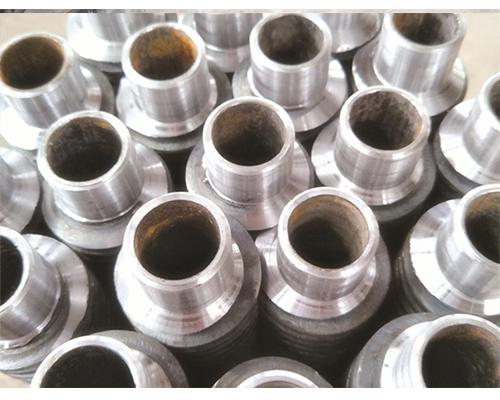What is integral finned tube?
The integral finned tube is rolled from the thick wall seamless tube after heating. The finned tube and the base tube are the same metal body without defects such as desoldering and low tightness. Because the finned tube and base tube are the same metal body with low thermal resistance, the heat transfer efficiency is improved. The integrated finned tube has obtained the national patent, and the special equipment "hot rolling steel based finned tube processing machine tool" is used for the production of integrated finned tube. The heat transfer ratio of "hot rolled steel based finned tube" to its equal diameter smooth tube can reach 2.67~3.46 times through the experiment of the heat flow center of the School of Energy and Power Engineering of Xian Jiaotong University.
What is integral finned tube main size?
The integrated finned tube has a strong anti-fly ash scour effect and has high heat exchange capacity and enviroment durability. It is an ideal replacement element for heat exchange elements in coal-fired boilers in thermal power plants.

| Item | OD (mm) | WT (mm) | Height (mm) | heat transfer Area(㎡/m) |
| 1 | 30 | 1.5 | 6 | 0.287 |
| 2 | 32 | 1.5 | 7 | 0.308 |
| 3 | 32 | 2 | 8 | 0.324 |
| 4 | 34 | 2 | 10 | 0.407 |
| 5 | 34 | 3 | 8 | 0.392 |
| 6 | 36 | 3 | 10 | 0.432 |
| 7 | 36 | 3.5 | 8 | 0.418 |
| 8 | 36 | 4 | 10 | 0.437 |
| 9 | 38 | 3 | 8 | 0.484 |
| 10 | 38 | 3.5 | 10 | 0.574 |
| 11 | 38 | 4 | 10 | 0.574 |
| 12 | 42 | 3.5 | 8 | 0.566 |
| 13 | 42 | 4 | 10 | 0.586 |
| 14 | 42 | 4.5 | 10 | 0.586 |
| 15 | 48 | 3.5 | 8 | 0.628 |
| 16 | 48 | 4 | 10 | 0.657 |
| 17 | 48 | 4.5 | 12 | 0.677 |
| 18 | 51 | 4 | 10 | 0.685 |
How to manufacturer the integral finned tube?
The Integral spiral finned tube is rolled from the thick wall seamless tube after heating. The finned tube and the header tube are the same metal body without defects such as desoldering and low tightness. Because the finned tube and header tube are the same metal body with low thermal resistance, the heat transfer efficiency is improved. The integrated finned tube has obtained the national patent, and the special equipment "hot rolling steel based finned tube processing machine tool" is used for the production of integrated finned tube. The heat transfer ratio of "hot rolled steel based finned tube" to its equal diameter smooth tube can reach 2.67~3.46 times through the experiment of the heat flow center of the School of Energy and Power Engineering of Xian Jiaotong University.
What is integral finned tube advantage?
The Integral spiral finned tube has a strong anti-fly ash scour effect, and has high heat exchange capacity and enviroment durability. It is an ideal replacement element for heat exchange elements in coal-fired boilers in thermal power plants. Integrated finned tube|Integral spiral finned tube
Comments
Post a Comment